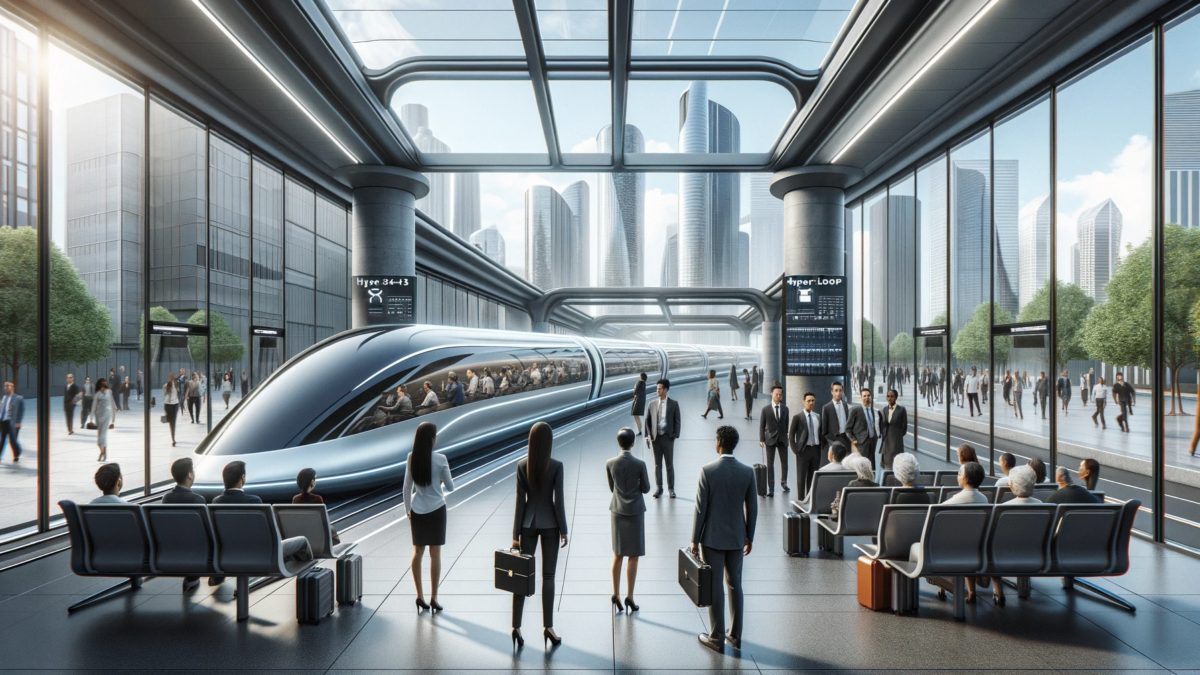The notion of the Hyperloop, initially introduced by entrepreneur Elon Musk in 2013, has subsequently fascinated scientists, engineers, and the general public alike. This innovative kind of transportation has the potential to fundamentally change our perception of travel by providing fast, effective, and eco-friendly alternatives. This blog post explores the potential of the Hyperloop, analyzing its benefits, drawbacks, uses, constraints, and prospects for the future.
Table of Contents
The Possibilities of Hyperloop:
The Hyperloop transcends the concept of a mere high-speed train. The system consists of a network of low-pressure tunnels that allow pods to travel without encountering air resistance or friction. The architecture enables the Hyperloop to achieve unparalleled velocities of up to 1200 km/h (750 mph), potentially revolutionizing long-distance transportation.

Advantages:
- Speed and Efficiency: The most significant advantage of the Hyperloop is its extraordinary speed, which could reduce travel time between major cities to minutes. faster than aeroplanes
- Environmental Impact: With electric propulsion and minimal energy consumption, it poised to be a sustainable alternative to current modes of transportation.
- Reduced Traffic Congestion: By offering a faster alternative to cars and planes, it could significantly alleviate traffic congestion.
Disadvantages:
- High Initial Costs: Building Hyperloop infrastructure involves substantial initial investment, which could be a barrier to its implementation.
- Safety Concerns: Operating at such high speeds, ensuring passenger safety in emergencies is a significant challenge.
- Technological Uncertainties: As a cutting-edge technology, it faces uncertainties in terms of feasibility and reliability.
Applications:
The principal utilization of the Hyper-loop would be in the realm of transportation, resulting in a substantial reduction in the duration of travel between cities. Furthermore, it possesses prospective uses in the realm of freight transportation, which could lead to decreased delivery durations and perhaps revolutionize supply chain management.
Limitations:
- Geographical Constraints: The construction of Hyper-loop tracks requires significant geographical considerations, including land rights and terrain.
- Regulatory Hurdles: The Hyper-loop must navigate complex regulatory environments, which could delay its implementation.
- Public Acceptance: Gaining public trust in this new form of transportation is crucial for its widespread adoption.
Future Scope:
The future of Hyper-loop technology appears auspicious, as it continues to make strides in the fields of engineering and materials science. The potential of this system extends beyond Earth, as there are plans to develop comparable systems on other worlds such as Mars. The Hyper-loop has the potential to become a fundamental element of upcoming intelligent urban areas, seamlessly connecting with other environmentally-friendly modes of transit.
Conclusion:
The Hyper-loop is not only a remarkable technological achievement, but also provides a preview of the future of transportation. Although there are still obstacles to overcome, the evident potential of this technology to completely transform the tourism industry cannot be ignored. With the progress of technology and the shift towards sustainable lifestyles, the Hyper-loop emerges as a symbol of groundbreaking innovation and optimal effectiveness.

Add a Comment